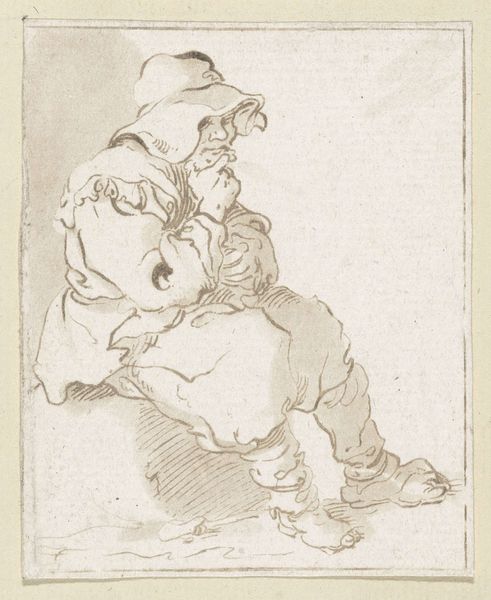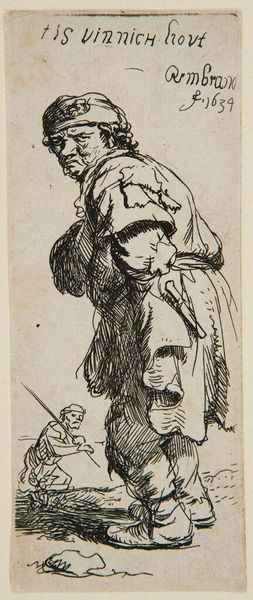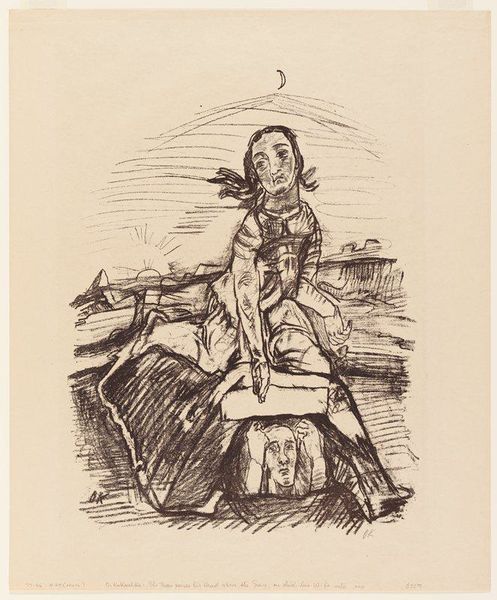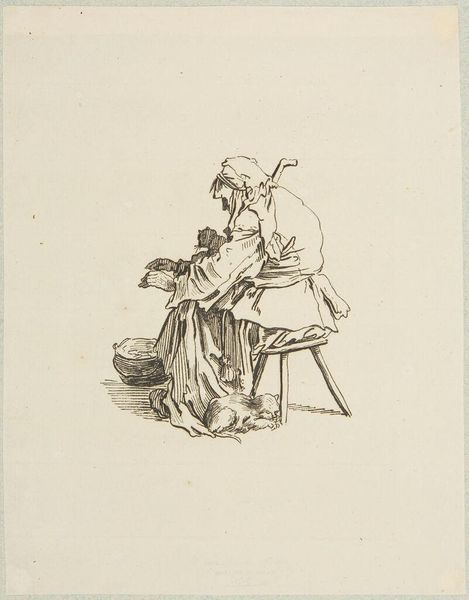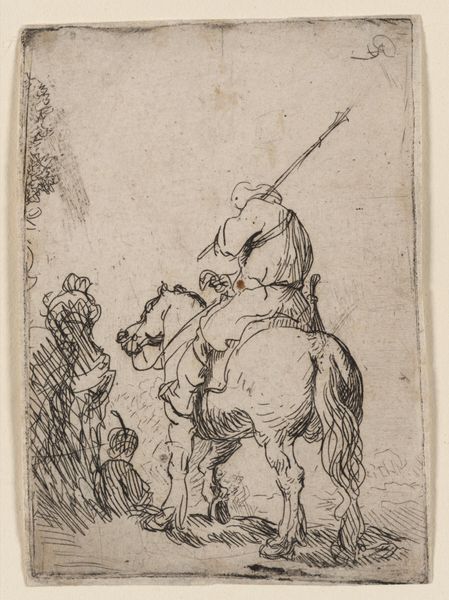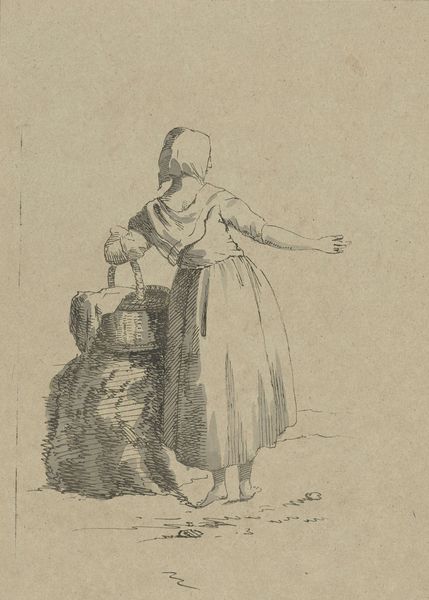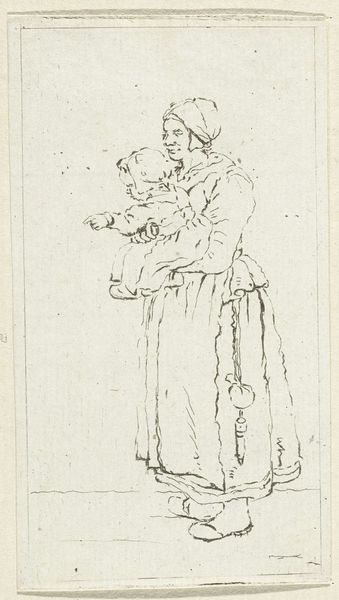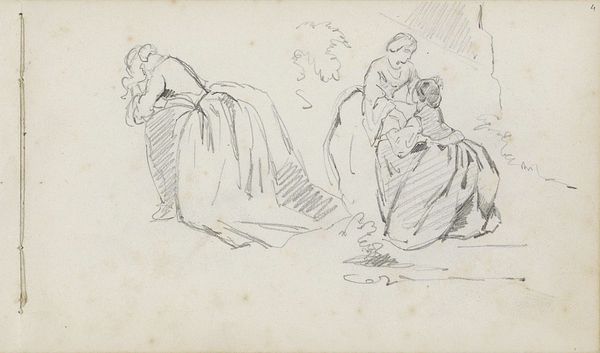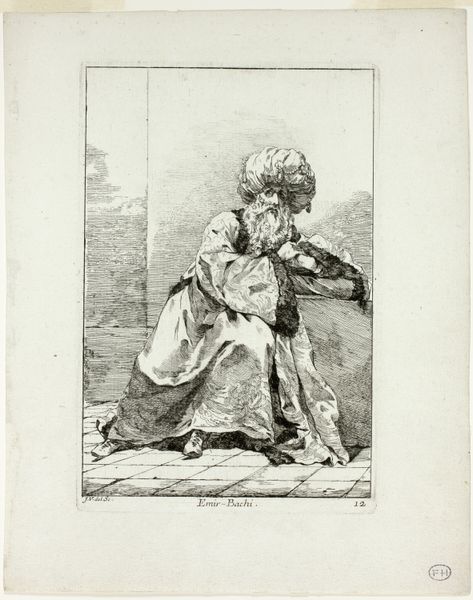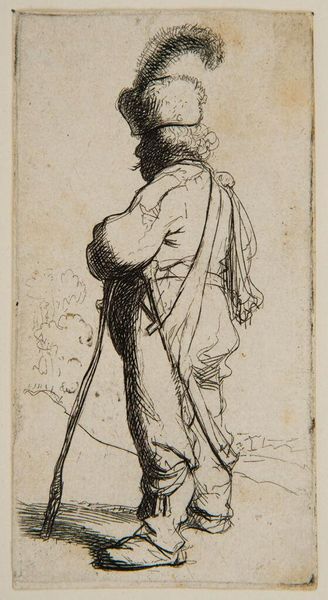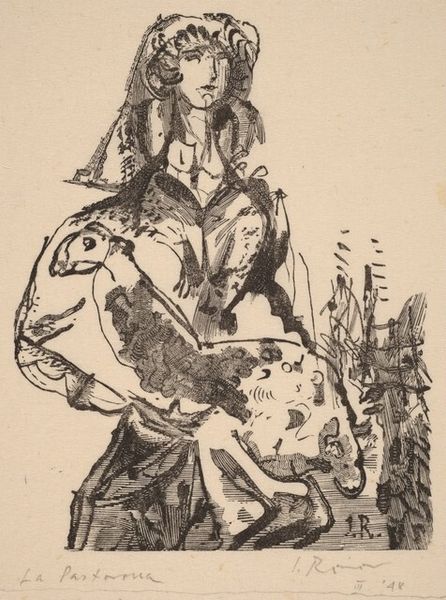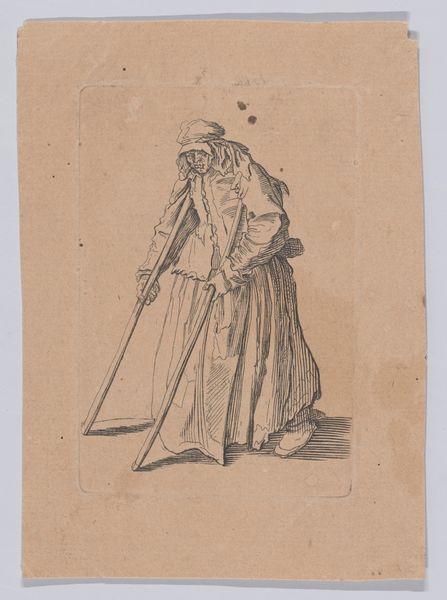
Dimensions: height 56 mm, width 52 mm
Copyright: Rijks Museum: Open Domain
Editor: So, here we have "Man en een vrouw kussen elkaar op de wang" which roughly translates to "Man and Woman Kissing on the Cheek", an ink drawing on paper made sometime between 1836 and 1912 by Isaac Weissenbruch. It’s deceptively simple but I’m drawn to the artist’s minimal approach to rendering their figures, all thin and sketch-like. What are your thoughts? Curator: It’s interesting to consider the materiality of this work within the context of 19th-century production. This isn’t a grand oil painting commissioned by a wealthy patron. Instead, we see humble materials – paper and ink – employed to depict a scene of intimate affection, possibly a commentary on changing social mores and how art could now represent common affection beyond depictions of elites. What kind of ink do you think Weissenbruch used and where did he source it? The materials matter as much as the motif, don't you think? Editor: I hadn't considered the ink! It’s so easy to overlook, isn't it? I suppose if he had access to readily available manufactured ink, it says something about democratization and expanding material access to art, but the sourcing… Was ink-making itself a cottage industry? That would indicate something quite different about labour at the time! Curator: Precisely! And what about the paper? The quality, the texture – these details provide insight into the economics of art production and consumption during Weissenbruch’s time. The roughness suggests utility, or disposability – maybe these drawings are for personal contemplation, or early drafts of works destined for other media? They raise key questions of the labor behind not only the artistic production, but also that of materials. Editor: I suppose it’s tempting to get swept away by the romantic image but, you’re right, delving into the materials offers a more concrete understanding. Thinking about the availability and type of ink, paper, and potential role within Weissenbruch's total output contextualises not just the piece, but its production too. Thanks for highlighting that! Curator: Absolutely. By exploring the tangible components, we begin to understand the social conditions and values that shaped its creation. Every art piece contains multitudes beyond surface appearances, when its labor can be identified, contextualized and acknowledged!
Comments
No comments
Be the first to comment and join the conversation on the ultimate creative platform.
